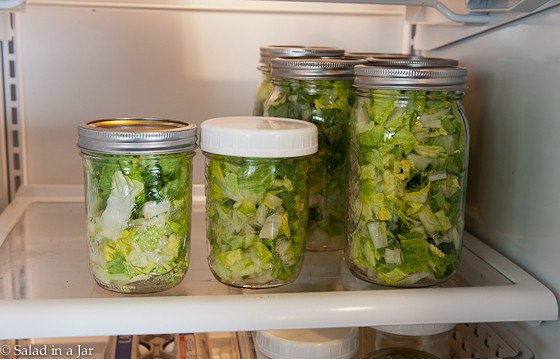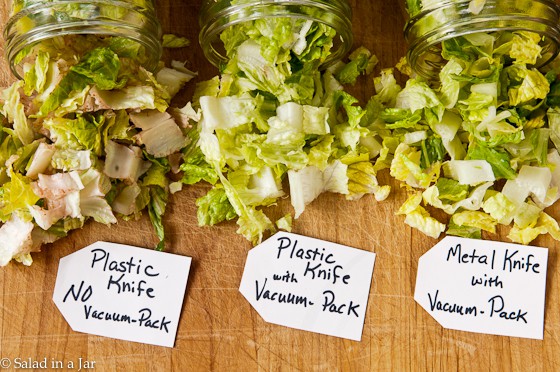Does a Plastic Lettuce Knife Keep Lettuce from Browning?
Sneak Preview: Does a plastic lettuce knife keep lettuce from browning better than vacuum-sealing? Which works better? Here is my answer. You might be surprised.

As an Amazon Associate, I earn from qualifying purchases.
It’s question time again, folks! Regarding how I vacuum-seal lettuce into Mason jars, several people have left comments/questions about using a plastic knife to cut lettuce. They claim it deters brown cut edges, thus avoiding the need to vacuum-seal lettuce for those who desire to store cut lettuce long term.
When I say long-term, I mean about a week to 10 days.
The Test
I decided to test it for myself, so I chopped some hearts of Romaine with a plastic knife and some with a metal knife.
I prepared three jars
Jar #1: Hearts of romaine lettuce cut with a plastic knife, stored in a securely-covered glass jar, but not vacuum-packed.
Jar #2: Hearts of romaine lettuce sliced with a plastic knife, then vacuum-packed.
Jar #3: Hearts of romaine lettuce, swiftly chopped with a metal knife and then vacuum-sealed. This is the way I always prepare lettuce.



Interesting, don’t you think? The two vacuum-packed jars, one cut with a metal knife and one cut with a plastic knife, still look as fresh as the day I packed them. No brown edges. But that jar on the left, cut with a plastic knife, but not vacuum-packed? Yuk!!
The Answer to the Question: “Does a Plastic Lettuce Knife Keep Lettuce From Browning?”
I won’t need my plastic knife after all since a sharp metal knife cuts faster and easier. Indeed, vacuum-packing removes the oxygen, so the edges don’t get brown, no matter how you cut the lettuce.
If you have questions or suggestions, email me privately for a quick answer: Paula at saladinajar.com. Hope to see you again soon!

Paula Rhodes, owner
As a retired home economist, I created Saladinajar.com to share my belief that you don’t have to be a chef to find joy in creating homemade food worth sharing. Bread machines (used in an unconventional way), homemade yogurt, and quick microwave recipes are my specialty.